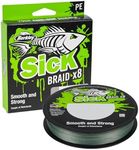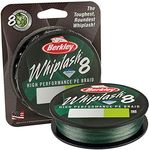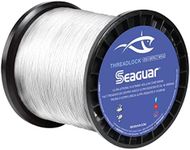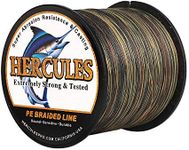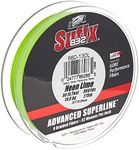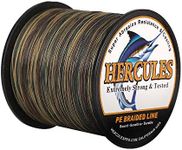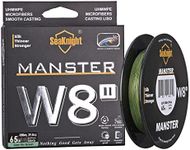Buying Guide for the Best Braided Fishing Lines
Choosing the right braided fishing line can significantly enhance your fishing experience. Braided lines are known for their strength, sensitivity, and thin diameter, making them a popular choice among anglers. To pick the best braided fishing line for your needs, you should consider several key specifications. Understanding these specs will help you make an informed decision and ensure that you have the right line for your fishing style and target species.Line Strength (Pound Test)Line strength, measured in pounds, indicates the maximum weight the line can handle before breaking. This spec is crucial because it determines the size of the fish you can catch without the line snapping. For light freshwater fishing, a line strength of 10-20 pounds is usually sufficient. For larger freshwater fish or inshore saltwater fishing, 20-50 pounds is more appropriate. For big game fishing, you might need a line strength of 50 pounds or more. Choose a line strength based on the size and type of fish you are targeting.
Line DiameterLine diameter refers to the thickness of the fishing line. Braided lines have a thinner diameter compared to monofilament lines of the same strength, which allows for longer casting distances and better line capacity on the reel. A thinner diameter is beneficial for finesse fishing and when you need to cast further. However, thicker lines are more abrasion-resistant and better suited for fishing in heavy cover or around structures. Consider the fishing environment and the need for casting distance when selecting the line diameter.
Line ColorThe color of the fishing line can affect its visibility both to you and the fish. High-visibility colors like yellow or green are easier for anglers to see above water, which is helpful for detecting bites and line movement. Low-visibility colors like clear or blue blend in with the water, making them less noticeable to fish. Choose a line color based on the water conditions and your personal preference for visibility. In clear water, low-visibility colors are often preferred, while in murky water, high-visibility colors can be advantageous.
Abrasion ResistanceAbrasion resistance refers to the line's ability to withstand wear and tear from contact with rocks, debris, and other underwater structures. This spec is important if you are fishing in areas with a lot of cover or rough terrain. Higher abrasion resistance means the line is less likely to break when it rubs against obstacles. If you frequently fish in such environments, look for a braided line with high abrasion resistance to ensure durability and reliability.
SensitivitySensitivity in a fishing line allows you to feel even the slightest bites and movements underwater. Braided lines are known for their high sensitivity due to their minimal stretch. This spec is important for detecting subtle bites and improving hook-setting performance. If you are fishing for species that have a delicate bite or if you need to feel the bottom structure, a highly sensitive line is beneficial. Choose a braided line with good sensitivity to enhance your ability to detect and respond to fish activity.
